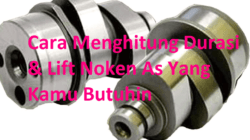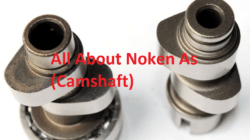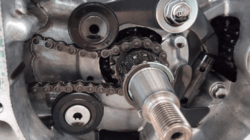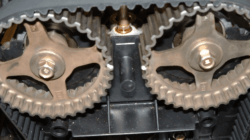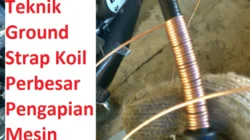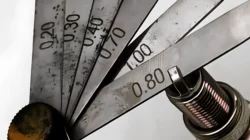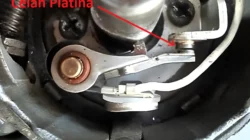Learn How to Install a Timing Belt Properly to Avoid Engine Damage – A snapped timing belt is no minor issue, it can lead to severe engine damage like piston-valve collisions. While some engines, such as the Suzuki Futura, may not be critically affected, most vehicles are at serious risk. That’s why understanding the proper timing belt installation method is crucial to prolong its life and avoid premature failure.
This article provides a concise and easy-to-follow guide on how to install a timing belt correctly so it lasts longer, whether you’re a beginner or a regular car owner.
Tips for Installing a Timing Belt for Longer Lifespan
Here are the key points to follow when installing a timing belt to ensure durability and reduce the risk of damage:
1. Do Not Fold or Twist the Timing Belt
When removing the old timing belt, avoid folding, bending, or twisting it. Internal components of the belt can be damaged by mishandling, drastically shortening its lifespan after reinstallation.
2. Avoid Contact with Oil and Water
The timing belt should always remain dry. Exposure to oil, water, or steam can degrade its material, causing it to become brittle or slippery—both of which can lead to catastrophic failure.
3. Mark the Rotation Direction of the Old Belt
If you plan to reuse the old belt, mark its rotation direction with an arrow. This ensures the belt rotates in the same direction upon reinstallation, helping to prevent uneven wear.
4. Align Timing Marks with TDC
Ensure that the timing marks on the camshaft and crankshaft sprockets are aligned with the Top Dead Center (TDC) position of the number one piston during the compression stroke. This step is critical to maintaining accurate valve timing.
5. Check the Tensioner and Idler Pulley
Make sure the tensioner and idler pulleys rotate smoothly. Listen for any noise and check for excess play. Also ensure there is enough grease inside the bearing to prevent premature wear.
6. Check Belt Tension After Installation
After placing the timing belt on the camshaft sprocket, check for appropriate belt tension. Apply pressure to the tensioner pulley to confirm it’s neither too loose nor too tight.
7. Rotate the Crankshaft Clockwise
Manually rotate the crankshaft one full turn in a clockwise direction to ensure all timing positions remain in sync. Never rotate it counter-clockwise as it can throw off timing alignment and cause damage.
By following the above steps, you can significantly extend the life of your timing belt and avoid major engine failures. Routine inspection and careful installation are key to long-lasting performance.


